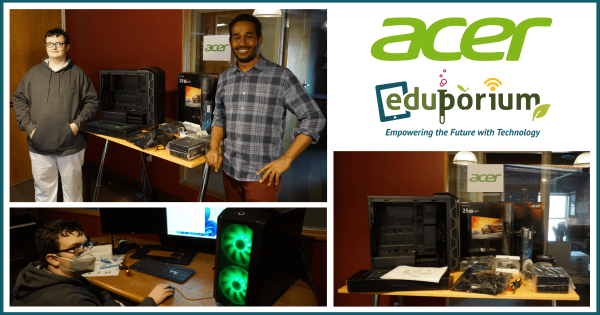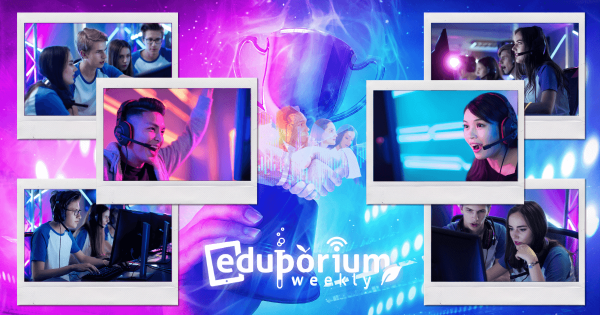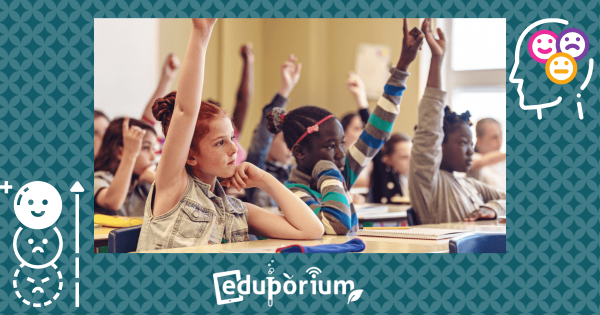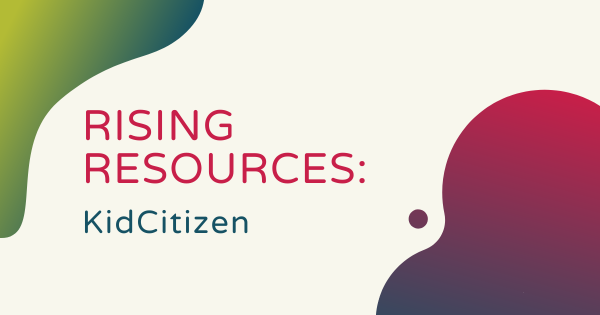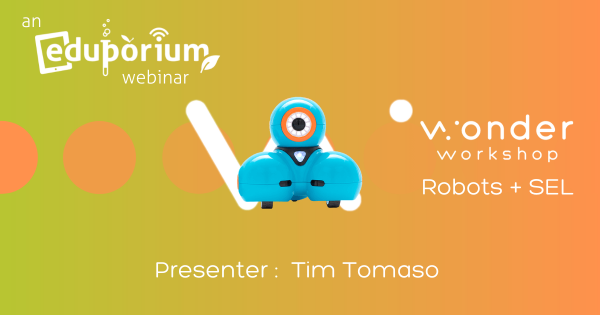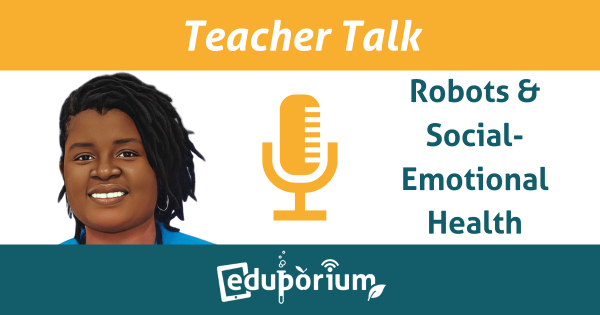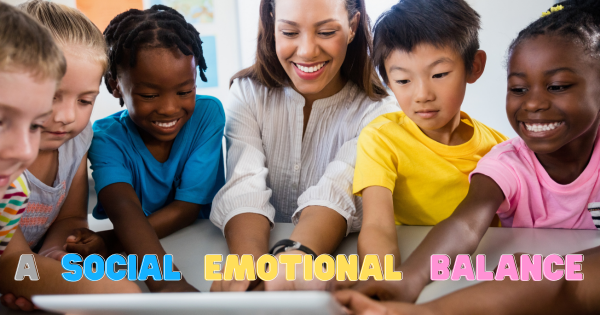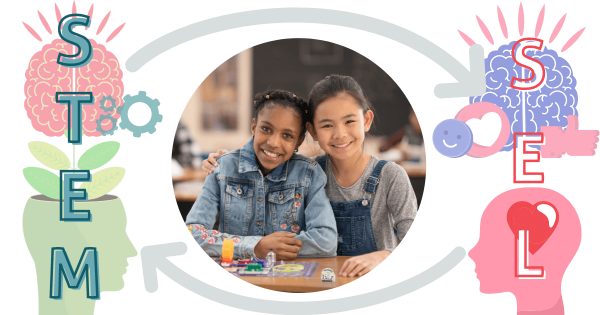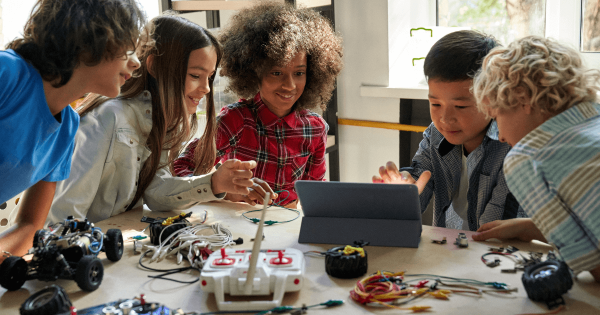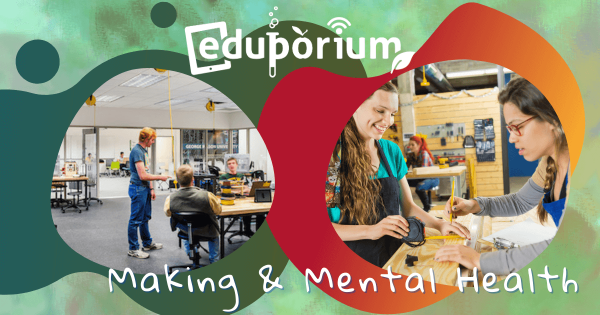About three years back, Logan and his family learned that he had inherited a rare genetic condition known as TANC2 Syndrome. Instantly, most of the normalcy slipped out of his life—with near-constant hospital visits, medical tests, and physical struggles—but one thing that remained was his passion for gaming, leading to his mom helping him learn to build his own system.
SEL
Social-emotional learning has evolved so much in just the last few years alone. Today, it's an essential element of a true 21st century learning experience. Even before the pandemic upended learning and transformed the ways in which educators interacted with their students, incorporating SEL was still very much a focal point. In our experiences, this can be done in many different ways. While SEL-inspired curricula can be effective, we sincerely believe in the power of touch. This is what activates social-emotional experiences and bolsters a student's social-emotional foundation. And, fortunately, there are so many opportunities for this in STEAM education. From programming a robot to working together on a design project, students can get the best of both worlds. All it takes is a little bit of strategy in combining these two key areas of 21st century education.
SEL in the classroom or other educational environments benefits students in a number of ways. Whether educators prefer to subtly introduce students to relevant SEL skills, concepts, and competencies or actively work to ensure students collaborate and communicate effectively, it can truly enhance many different types of lessons. Factor in all the new types of daily stressors students are facing as a result of distance learning, traumas, or any other personal experiences and SEL can play a huge role in ensuring they're able to continue learning. With stronger social-emotional health, students also often tend to perform better academically. We believe they can develop their SEL skills in all learning environments. This includes in the classroom, after school, on the playground, and in extracurricular participation. Here, you'll find our thoughts on why this is important and how STEM education can help.
-
Eduporium Weekly | Esports And SEL
The appeal of esports in education is not declining in all likelihood. Beyond the opportunities esports participation creates for students, they also have new chances to compete, experience being part of a team, and even work on developing genuine career skills. They can also develop soft skills while competing, which commonly accelerates social-emotional development. -
SEL And Equity: Truly Teaching Today's Students
With SEL in the classroom, ensuring that every student feels heard, valued, respected, and advocated for are each among the biggest drivers as we all aim to collectively increase equity in education. When teachers meet these conditions, kids often feel more comfortable in their learning environments, which can spark added achievement when their emotional state is strong. -
Rising Resources | Social Studies With KidCitizen
KidCitizen is an online resource that students can use to watch informative videos and episodes about political events, news, and also history. It helps them become more informed and interested in crucial political happenings as well as helping to spark ideas for how they can share their voices. Keep reading to learn more about using KidCitizen in the classroom. -
Video: Our Webinar On Wonder Workshop's Dash And SEL
For anyone who isn’t familiar with the Dash Robot, Tim started with a brief introduction. For its cost, the Dash is extremely high-tech, durable, and it’s built with a strong battery life. Elementary educators can use it across their STEAM lessons for up to three hours on a single charge, covering multiple class periods and incorporating SEL. Watch the full -
Teacher Talk | Robots & Social-Emotional Health
The skills kids acquire through hands-on STEM activities can help prepare them to show resilience or emotional intelligence when they face adversity as well as helping them learn to navigate modern-day challenges. Dr. Pam Davis founded pop-up makerspace company, Wellbotics, and learned this early on. Here, she talks SEL, social justice, embodied learning, and more. -
Helping Children Achieve Social-Emotional Balance In Learning
Students have dealt with a slew of varying emotions and all-new stressors since learning went remote amid the pandemic and plenty are still working back from that. Infusing MakerEd tools into new types of instruction is one solution that could help children restore some of that emotional balance so they can keep learning, express ideas, and share feelings comfortably. -
STEM And SEL In Classrooms: Exploring The Relationship
Starting with teaching skills like creative problem solving, persistence, and collaboration, merging these two key elements of education can really help students learn to enjoy the productive struggles they’ll likely face in a tech-driven world. So, we’re exploring how teachers can combine SEL, EdTech, and the right attitudes to help kids become well-rounded problem solvers. -
SEL In The K-12 Classroom: How Maker Education Fits In
Social-emotional learning is a process—and it’s arguably one that students never truly complete. Educators can, however, always help kids strengthen key emotional competencies and hands-on experiences in their classroom can play a large role, especially when they take part in STEAM or MakerEd initiatives that help them connect to their projects on an emotional level. -
Makerspaces And Mental Health For Students
More than ever before, we’re understanding how makerspace experiences help provide students with emotional benefits in addition to vital academic ones. If today’s students are having any variety of academic, emotional, or any other personal problems, for example, putting them aside and making something is a great way to help them shift their focus and reduce stress.




